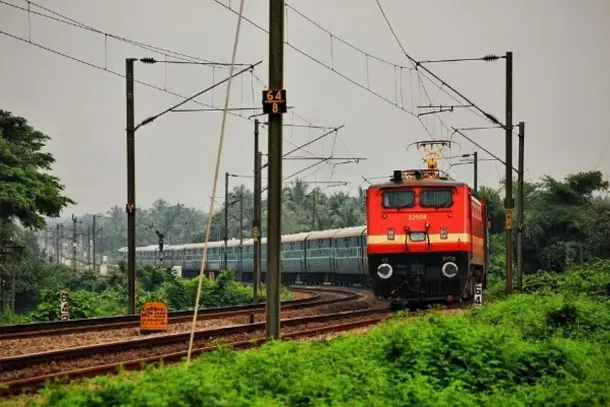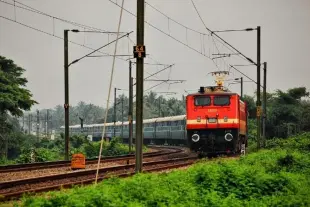Infrastructure
India Becomes Global Leader In Sustainable Rail Transport With 95 Per Cent Track Electrification
V Bhagya Subhashini
Aug 26, 2024, 01:19 PM | Updated Aug 30, 2024, 03:47 PM IST
Save & read from anywhere!
Bookmark stories for easy access on any device or the Swarajya app.


Indian Railways has electrified 95 per cent of its expansive 68,000-kilometre track network, making it the largest green railway system in the world, according to Mukul Saran Mathur, Additional Member of the Railway Board.
India has emerged as a frontrunner in sustainable rail transport, outpacing electrification efforts in the European Union, the United Kingdom, and the United States. In comparison, the EU has 56 per cent electrified network, the UK 38 per cent, and the US just one per cent.
Speaking at the ASSOCHAM National Conference, Mathur emphasised the significance of this development for India's railway modernisation. He also shared that Indian Railways serves over two crore passengers daily and recently operated more than 5,000 special trains to assist migrant workers during challenging times.
While highlighting India's advancements, Mathur described the Vande Bharat trains as a “flagship product” symbolising India’s modernisation effort in rail transport.
The Indian government has allocated Rs 85,000 crore for railway expansion in the 2023-24 fiscal year, Mathur added. As part of this investment, improvements have been made to the ticketing system, reducing the refund process time to just one or two business days, reports NDTV.
Indian Railways has invested over INR 46,425 crore since 2014. By December 2023, its fleet included 10,238 electric locomotives, significantly outnumbering the 4,543 remaining diesel engines still in service. Though phasing out diesel engines will take time, the transition to electric engines has seen substantial progress.
In the fiscal year 2023-24 alone, Indian Railways electrified 7,188 kilometres of track, with key routes such as Ahmedabad-Rajkot-Okha (499 km), Bengaluru-Talguppa (371 km), and Bathinda-Firozpur-Jalandhar (301 km) now fully operational under electric traction.
This push toward electrification is not just an infrastructure upgrade but a commitment to sustainability, with projections showing that carbon emissions will be reduced by 24 per cent by 2027-28.
During the conference, other industry experts agreed that railway modernisation is critical for India's economic growth and the goal of 'Viksit Bharat' (Developed India) by 2047.
Sanjay Bajpai, co-chairman of the National Council on Logistics and Warehousing, underscored the importance of technology in improving railway operations. He pointed out the role of AI and machine learning in achieving 100 per cent cargo visibility and ensuring last-mile connectivity under the Gati Shakti plan.
The discussions at the conference underscored the central role of the railway sector in achieving the goal of Viksit Bharat by 2047, with experts stressing that the modernisation of India's railways is a critical factor for the country's overall development trajectory.
Moreover, the electrification program is not solely about environmental benefits; it's a catalyst for economic growth. The initiative generates employment opportunities during construction, reduces reliance on imported fossil fuels, and positions Indian Railways as a modern and efficient engine of the nation's economy.
V Bhagya Subhashini is a staff writer at Swarajya. She tracks infrastructure developments.





